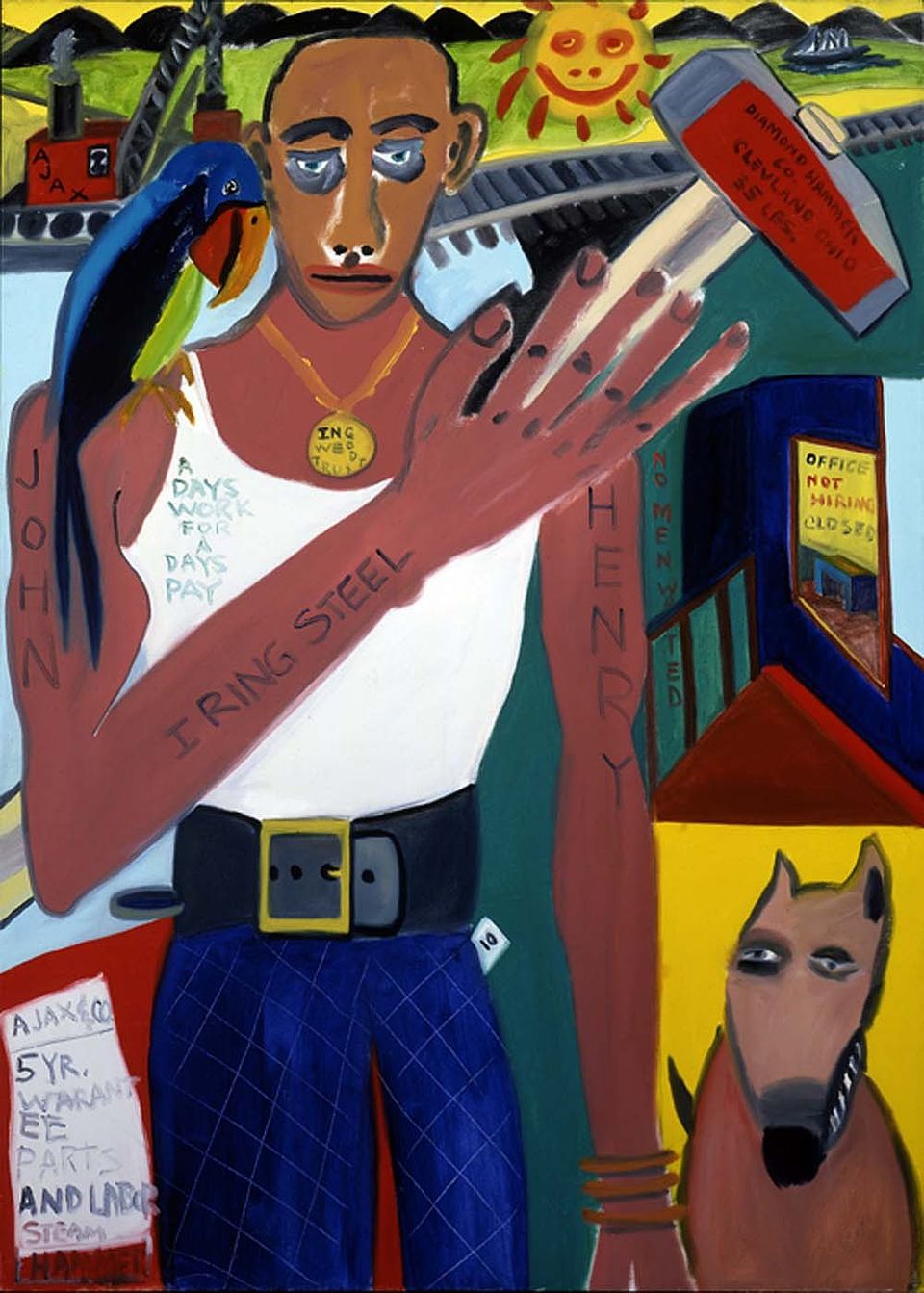Thornton Dial, Sr., Top of the Line (Steel), 1992, mixed media: enamel, unbraided canvas roping, and metal on plywood, 65 x 81 x 7 7⁄8 in. (165.2 x 205.7 x 20.1 cm), Smithsonian American Art Museum, Gift from the collection of Ron and June Shelp, 1993.47
Copied
Artwork Details
- Title
- Top of the Line (Steel)
- Artist
- Date
- 1992
- Location
- Not on view
- Dimensions
- 65 x 81 x 7 7⁄8 in. (165.2 x 205.7 x 20.1 cm)
- Credit Line
- Gift from the collection of Ron and June Shelp
- Mediums Description
- mixed media: enamel, unbraided canvas roping, and metal on plywood
- Classifications
- Subjects
- Abstract
- Figure — fragment — face
- Figure group
- Object Number
- 1993.47
- Research Notes
Artwork Description
African American Art: Harlem Renaissance, Civil Rights Era, and Beyond, 2012
Exhibitions
The Smithsonian American Art Museum is home to one of the most significant collections of African American art in the world.














